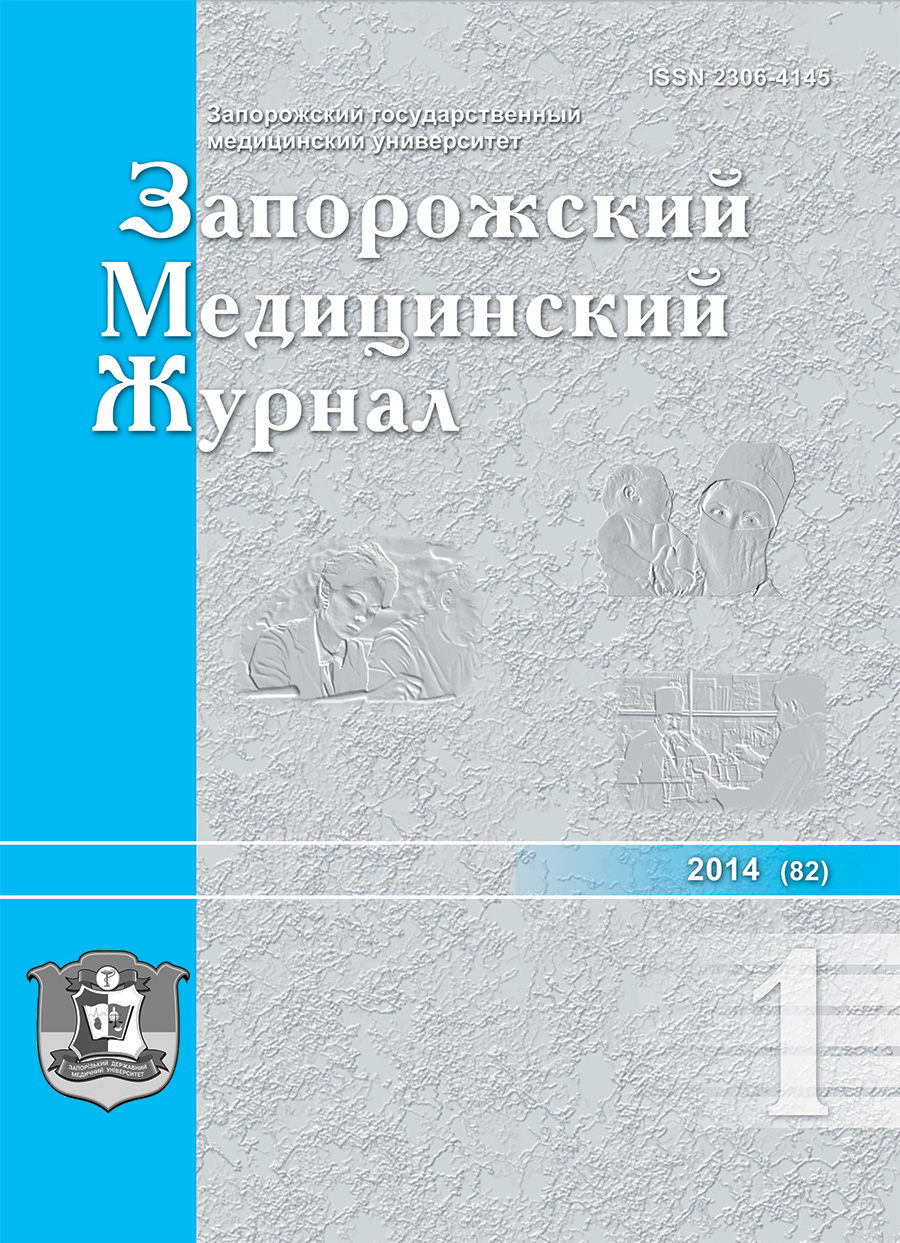ANALYSIS OF HEART RATE VARIABILITY IN PATIENTS WITH PERSISTENT ATRIAL FIBRILLATION
DOI:
https://doi.org/10.14739/2310-1210.2014.1.23769Keywords:
acute hepatitis В, use alcohol in hepatotoxic doses, heart rate variabilityAbstract
The most common cardiac arrhythmia leading to disability is atrial fibrillation, it is associated with an increased risk of stroke and increased mortality. Currently, a large interest have studies of autonomic tone in patients with atrial fibrillation and clarify the pathogenetic mechanism of paroxysms by analysis of heart rate variability. Heart rate variability - is the variability of the duration of RR intervals of consecutive cycles of heart rate at regular intervals. The first studies of heart rate variability have been carried out in the late '50s under the guidance of RM Baevskiy, and were associated with pilot training for space flight. The main objective was to evaluate the functional state of healthy subjects. Nervous regulation of heart rate is pretty and the parasympathetic division of the ANS, has a complex hierarchical structure and consists of extracardiac and intracardiac systems. The parasympathetic and sympathetic nervous systems are in a particular interaction in the regulation of heart rate. There is a so-called vegetative homeostasis.
The aim of the study was to assess heart rate variability in patients with persistent atrial fibrillation, changes in heart rate variability on the background of the therapy. We examined 124 people between the ages of 40 and 65. The first group included patients with primary with coronary heart disease combined with hypertension stage I-II with persistent atrial fibrillation, only 62 people. The second group consisted of 31 patients with ischemic heart disease and persistent atrial fibrillation without hypertension. The third group consisted of 31 practically healthy people. The study of HRV was performed at rest, by writing the 5-minute RR intervals.
Conclusions: A role in the emergence and persistence of AF paroxysms play neuro effects on the heart. The analysis of HRV allows you to make a more precise choice of drug and find it more optimal dose. Given the lack of uniform standards of HRV in patients with coronary artery disease should be analyzed the dynamics of these parameters during treatment compared with baseline data. In the presence of the effect of β-blocker treatment in patients with persistent AF, the increase in HRV parameters should be considered as a beneficial effect of β-blockers in the SNC. The achievement of clinical effect in patients with persistent AF receiving amiodarone accompanied by an increase of HRV as SDNN and TP. Elimination of the HRV as SDNN and TP is a predictor of loss of effect, as in the treatment of β-blockers and amiodarone and require timely correction of antiarrhythmic therapy.
Conclusions.
1. Acute hepatitis B in patients with chronic alcohol use in hepatotoxic doses is characterized by longer (p<0,05) prodrome, cholestatic (7,7%) and hemorrhagic manifestations (5,8%), higher levels of hyperbilirubinemia (p<0,05), and during convalescence maintaining higher (p<0,05), alanine aminotransferase activity compared with group II patients.
2. Acute period of acute hepatitis B regardless of whether chronic alcohol use in hepatotoxic doses is characterized by the development of autonomic imbalance towards vagotonia.
3. Period of convalescence in patients with acute hepatitis B with chronic alcohol use in hepatotoxic doses is accompanied by more severe autonomic dysfunction in 33,6% (p<0,05).
References
Баевский Р.М. Анализ вариабельности сердечного ритма: история и философия, теория и практика / Р.М. Баевский // Клиническая информатика и телемедицина. – 2004. – № 1. – C. 54–64.
Сычев О.С. Фибрилляция предсердий. Современные подходы к лечению и профилактике осложнений у пациентов с сопутствующей патологией сердца / О.С. Сычев // Український медичний часопис. – 2011. – № 6. – С. 54–58.
Bettoni M. Autonomic tone variations before the onset of paroxysmal atrial fibrillation / M. Bettoni, M. Zimmermann // Circulation. – 2002. – Vol. 105. – P. 2753–2759.
ACC/AHA/ESC 2010 guidelines for the management of patients with atrial fibrillation-executive summary / A.J. Camm, P. Kirchhof, Y.H. Gregory [et al.] // Eur. Heart J. – 2010. – Vol. 31. – P. 2369–2429.
Coumel P. Paroxysmal atrial fibrillation: role autonomic nervous system / P. Coumel // Arch. Mai. Coeur. Vaiss. – 1994. – № 87. – P. 55–62.
Evidence for increased atrial sympathetic innervation in persistent human atrial fibrillation / P. Gould, M. Yii, C. McLean [et al.] // Pacing. Clin. Electrophysiol. – 2006. – Vol. 29. – P. 821–829.
Lobko O. The results of the retrospective observation of patients with persistent atrial fibrillation: assessment of cardiovascular events / O. Lobko, E. Mohylnytskyy, S. Lyzogub // Ukrainian Journal of Cardiology. – 2012. – Vol. 5. – P. 35–41.
Lok N.S. Abnormal vasovagal reaction, autonomic function, and heart rate variability in patients with paroxysmal atrial fibrillation / N.S. Lok, C.P.Lau // Pacing. Clin. Electrophysiol. – 1998. – Vol. 21 (2). – P. 386–395.
Task Forse of the European Society of Cardiology and The North American Society of Pacing and Electrophysiology. Heart Rate Variability. Standarts of Measurements, Physiological Interpretation and Clinical Use // Circulation. – 1996. – Vol. 93. – P. 1043–1065.
Downloads
How to Cite
Issue
Section
License
Authors who publish with this journal agree to the following terms:
Authors retain copyright and grant the journal right of first publication with the work simultaneously licensed under a Creative Commons Attribution License that allows others to share the work with an acknowledgement of the work's authorship and initial publication in this journal. 
Authors are able to enter into separate, additional contractual arrangements for the non-exclusive distribution of the journal's published version of the work (e.g., post it to an institutional repository or publish it in a book), with an acknowledgement of its initial publication in this journal.
Authors are permitted and encouraged to post their work online (e.g., in institutional repositories or on their website) prior to and during the submission process, as it can lead to productive exchanges, as well as earlier and greater citation of published work (See The Effect of Open Access)

